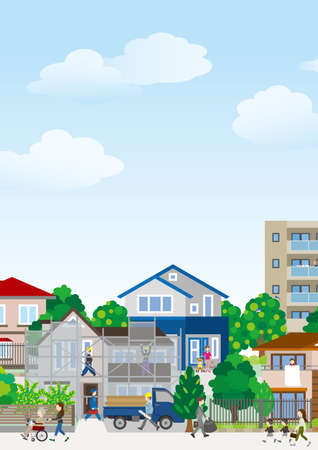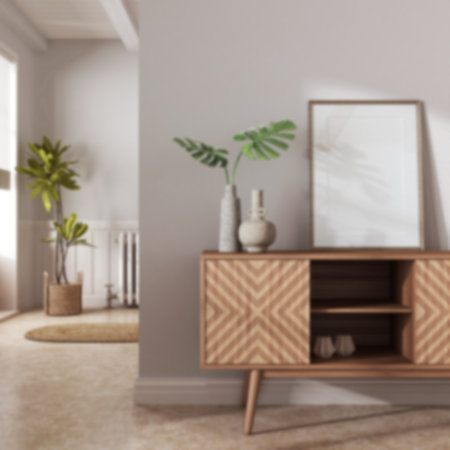Understanding Sustainability in the British Context
Eco-friendly living in the UK goes beyond simply choosing green products; it is deeply rooted in the nation’s unique environmental priorities and regulatory landscape. For British households, sustainability means adapting to local climate conditions, conserving natural resources, and embracing the government’s commitment to reducing carbon emissions. Key elements include energy efficiency standards set by Part L of the Building Regulations, encouragement of renewable energy sources, and an emphasis on responsibly sourced materials. The British approach also values the preservation of heritage architecture while integrating modern eco-conscious innovations. Understanding these factors is essential when designing or renovating a home with sustainability at its core, ensuring that choices not only benefit the environment but also align with national values and legal requirements.
Sourcing Local and Reclaimed Materials
One of the most impactful ways to enhance sustainability in modern British homes is by prioritising materials that are either locally sourced or reclaimed. This approach not only supports local industries but also significantly reduces the carbon footprint associated with transportation and manufacturing processes. By embracing resources that are already part of the British landscape—such as reclaimed timber from historic barns, salvaged bricks from Victorian terraces, or even upcycled slate tiles—homeowners can celebrate the nation’s architectural heritage while making conscious, eco-friendly choices.
The Benefits of Locally Sourced Materials
Choosing locally sourced materials offers a host of environmental and cultural benefits. It encourages regional craftsmanship and helps keep traditional skills alive, all while reducing emissions from long-distance shipping. Many British suppliers now offer responsibly harvested oak, Welsh slate, and other native resources ideal for contemporary interiors.
Locally Sourced vs. Imported Materials
| Material Source | Carbon Footprint | Support for Local Economy | Aesthetic Value |
|---|---|---|---|
| Locally Sourced (e.g., British oak, Cotswold stone) | Low | High | Authentic & Regionally Distinctive |
| Imported (e.g., tropical hardwoods, foreign marble) | High | Low | Varied but Less Contextual |
The Charm of Reclaimed Materials
Reclaimed materials bring a unique narrative to modern homes, infusing spaces with character and history. Salvaged timber beams, vintage floorboards, and old bricks not only divert waste from landfill but also offer unmatched patina and texture that new materials simply cannot replicate. This practice connects homeowners to Britain’s storied past while paving the way for a greener future.
Cultural Heritage Meets Contemporary Design
By incorporating locally sourced and reclaimed materials into your home renovation or build, you are making a meaningful statement: honouring British heritage, supporting sustainable practices, and crafting an interior that tells its own authentic story. Whether it’s a sleek kitchen with a reclaimed wood island or a living room wall clad in exposed London stock brick, these choices exemplify how modern British design can be both stylish and responsible.

3. Incorporating Natural Insulation and Eco Paints
When seeking to create a truly eco-friendly modern British home, integrating natural insulation and environmentally conscious paints is paramount. Sheep’s wool insulation, for example, is gaining popularity across the UK due to its impressive sustainability credentials and practical benefits. As a renewable British resource, sheep’s wool not only supports local agriculture but also delivers superior thermal performance and moisture regulation compared to conventional materials. Its natural breathability helps maintain a healthy indoor climate, reducing condensation and damp — a common concern in the UK’s varied weather.
Meanwhile, choosing eco-friendly paints is another impactful step towards greener living. Many brands in Britain now offer paints free from volatile organic compounds (VOCs), utilising plant-based binders and mineral pigments that emit far fewer toxins. These paints are available in a wide array of heritage and contemporary hues, allowing homeowners to honour classic British aesthetics or experiment with bold, modern palettes — all while safeguarding indoor air quality.
Together, natural insulation and low-impact paints contribute not only to reduced environmental footprints but also to a refined sense of comfort and style within the home. By opting for these British-sourced solutions, you can harmoniously blend tradition with innovation, ensuring your living space is as beautiful as it is responsible.
4. Integrating Green Technology and Smart Solutions
In the quest to create modern British homes that are both stylish and sustainable, the integration of green technology and smart solutions has become a defining trend. Homeowners across the UK are embracing innovative energy-efficient technologies that not only reduce their carbon footprint but also enhance everyday living comfort. Let’s explore how these advancements are shaping the future of eco-friendly British interiors.
Current Trends in Energy-Efficient Technology
The British market has seen a significant shift towards high-performance systems designed to lower energy consumption while maintaining aesthetic integrity. Three standout solutions are currently at the forefront:
| Technology | Description | Eco-Friendly Benefits |
|---|---|---|
| Heat Pumps | Extract ambient heat from air or ground to provide efficient heating and hot water. | Reduces reliance on fossil fuels, cuts utility bills, and lowers greenhouse gas emissions. |
| Triple Glazing | Advanced window system featuring three panes of glass for superior insulation. | Minimises heat loss, enhances acoustic performance, and improves thermal comfort year-round. |
| Smart Thermostats | WiFi-enabled devices allowing precise remote control over home heating schedules. | Optimises energy use based on occupancy patterns, offering real-time savings and convenience. |
Making Homes More Efficient and Future-Proof
The adoption of these technologies is not just about immediate environmental impact; it is also about preparing homes for a sustainable future. By incorporating heat pumps, triple glazing, and smart thermostats, homeowners can significantly boost their property’s EPC (Energy Performance Certificate) rating—a factor increasingly important in the UK housing market. Moreover, these upgrades align with evolving government standards for low-carbon living and can enhance resale value as demand for eco-conscious homes grows.
Seamless Integration into Modern Design
When thoughtfully integrated, green technologies complement the clean lines and open layouts characteristic of contemporary British interiors. For example, discreet underfloor heating powered by heat pumps can maintain minimalist aesthetics, while triple-glazed windows frame garden views without compromising efficiency. Smart thermostats blend seamlessly with sleek wall finishes and can be controlled via smartphone—bringing both beauty and intelligence to the heart of the home.
5. Designing with Biophilia and Outdoor Spaces
Incorporating biophilic design principles is a quintessentially modern way to honour Britain’s heritage of gardening while fostering sustainability and well-being in contemporary homes. By intentionally blurring the boundaries between inside and out, you can create living environments that are both visually inspiring and ecologically responsible. One popular approach is the installation of living walls—vertical gardens that use native British plant species such as ferns, ivy, and mosses. These features not only purify indoor air but also echo the lushness of traditional English gardens, making them a perfect fit for urban flats or countryside cottages alike.
Another effective method is to integrate large windows, glass doors, or even Crittall-style partitions that open onto patios or garden spaces. This seamless connection encourages a flow between interiors and exteriors, maximising natural light and providing easy access to fresh air—a hallmark of classic British design updated for eco-conscious lifestyles.
For outdoor areas, planting schemes should prioritise native species like foxglove, bluebell, or wild primrose, which support local pollinators and require less water than exotic imports. Incorporate elements such as green roofs or permeable paving to further boost biodiversity and manage rainwater sustainably. Traditional British garden touches—like woven willow fences, reclaimed brick paths, or bee-friendly herbaceous borders—can be reimagined using recycled or locally sourced materials to reflect a commitment to both style and environmental stewardship.
By thoughtfully designing with biophilia in mind, you not only enhance your home’s aesthetic appeal but also contribute meaningfully to Britain’s cherished landscape legacy and ongoing biodiversity efforts.
6. Finishing Touches: Sustainable Fixtures and Furnishings
To truly embrace eco-friendly living in modern British homes, the final layer lies in selecting sustainable fixtures and furnishings that reflect both style and environmental responsibility. Homeowners are increasingly seeking out brands and designers who champion green production methods, recycled materials, and ethical sourcing. Look to British companies such as Tom Raffield, renowned for their handcrafted lighting and furniture made from sustainably sourced wood in Cornwall, or Another Country, whose elegant pieces are crafted in the UK using FSC-certified timber and natural finishes. For textiles, The Natural Blanket Company offers beautifully woven throws using British wool, supporting local farmers and reducing carbon footprints.
Lighting with a Conscience
Opt for LED fixtures and lamps designed by innovative brands like Tala, who combine energy efficiency with timeless British design. Their glass bulbs and minimalistic pendants use responsibly sourced materials, ensuring your home glows with sustainable sophistication.
Eco-forward Upholstery and Accessories
Choose sofas and chairs upholstered in organic or recycled fabrics from makers like Sofa.com, which offers eco-friendly fabric options and frames constructed from sustainable hardwoods. For smaller details, consider accents from Weaver Green, whose rugs and cushions are ingeniously made from recycled plastic bottles—soft to the touch yet durable enough for family life.
A Balanced Aesthetic
Integrating these thoughtfully curated elements achieves a harmonious blend of comfort, aesthetics, and sustainability. By prioritising British-made, eco-conscious fixtures and furnishings, you not only support local craftsmanship but also ensure your modern home remains a beacon of mindful living—where every finishing touch tells a story of care for both people and planet.


